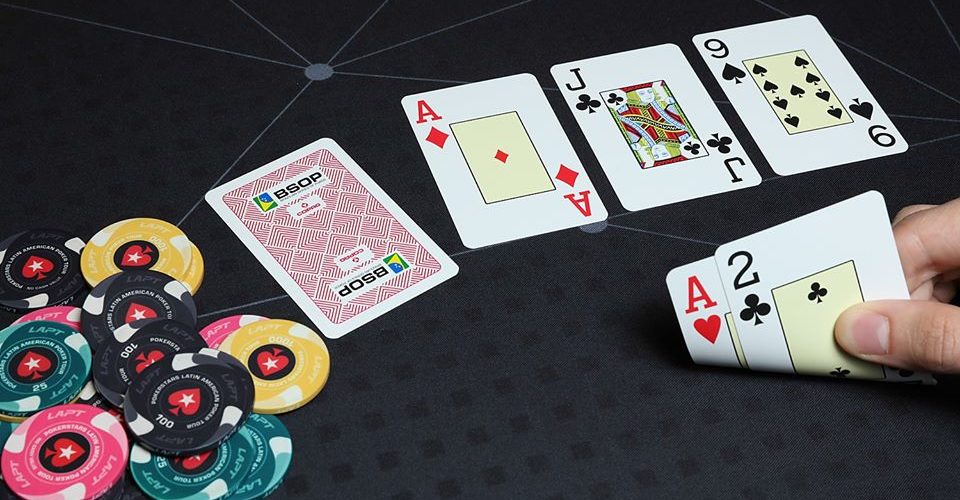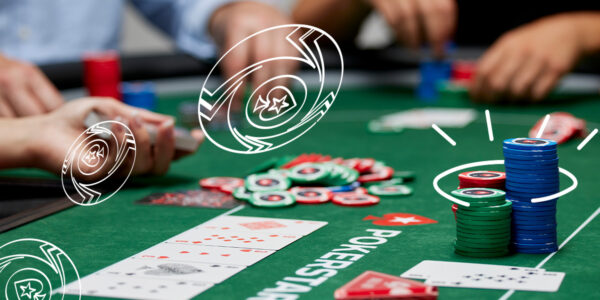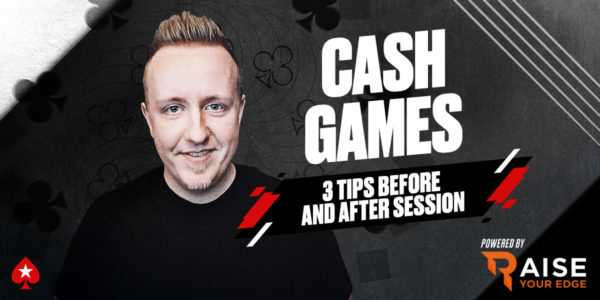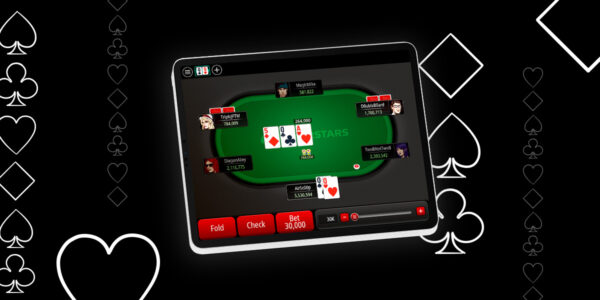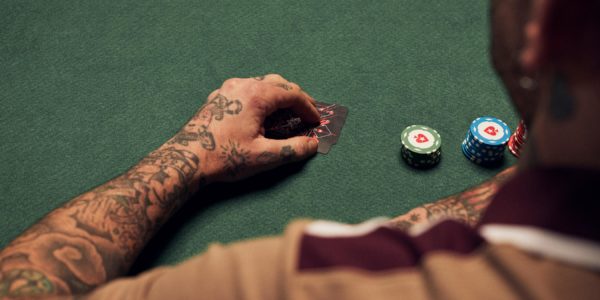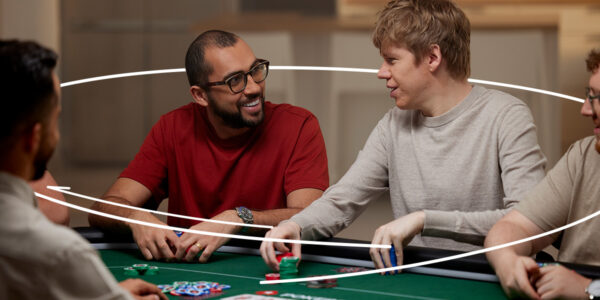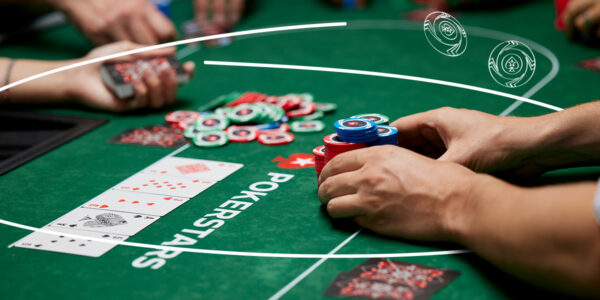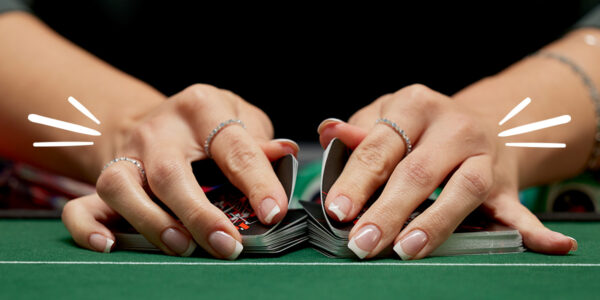Playing Top-Pair/Weak-Kicker
One of poker’s most dreaded and misplayed hands is without a doubt top pair with a bad kicker. How should A6o react when it flops an ace? When should you play these hands fast and when is it better to slow down? When do you call big river bets with them? Today’s mission is to answer questions like these.

Protecting the Checking Range
Perhaps the most key distinction between a good top pair and a bad one is that while the higher kicker performs well against your opponent’s decent top-pair, the low kicker performs better against his bluffs. Therefore, in a spot where we would like to bet some hands in our range and check others, we might put the weak-kicker top pair holdings into our checking range so that we can allow the pot to grow vs. Villain’s air hands that need fold equity to win. In other words, we’re checking to induce and catch bluffs. Let’s illustrate.
Say we are dealt K♥6♥ in the SB in a 6-max cash game and raise to 3BB. A fairly aggressive regular calls in the BB and the flop comes K♠9♣4♣. While we could value-bet here and increase the pot size favourably for a street or two, we would have to slowdown at some point any way. Our hand is not good enough to bet three times. Meanwhile, our range contains some hands that would quite like to check here. Medium holdings like TT-QQ and 9x are very happy to check/call. At the same time, we might also just want to give up against a tough opponent with some hands that perform very badly such as Q8o. It serves us well to build a checking range here.
Since the K♥6♥ is a great bluff catcher and is not wanting to build a huge pot by betting multiple times, it makes a very fine check. Putting enough hands like these into our checking range is a great way to protect that range from an aggressive player who might try to move us off lots of our perceived capped range.
We need some stronger pairs in our checking range. Top-pair/bad-kicker is perfect for this role as it wasn’t betting three times any way,

Urgent Value
Sometimes weak top pair has to be played faster. This is especially true when your pair is lower and vulnerable to being outdrawn and when your opponent is passive and therefore unlikely to do much bluffing, even if you give him the chance. Players like this are inclined to take free cards instead of trying to make you fold, and this is the very thing you should seek to prevent when your pair is small and there are many possible overcards to the board in Villain’s range.
In our next example, we open 8♣7♣ in the CO and are called by a passive foe in the BB. The flops comes 8♥6♦2♠ and villain checks. Not betting here would be a large mistake. Not only is this a flop where we need to get protection, but if we are going to get called by worse hands like low pairs and ace-high, then now is the time to bet – while the board is still harmless enough for these weak hands to want to continue. If we check here and a king rolls off on the turn, then getting more than one street of value will prove very difficult.
Moreover, since this opponent is known to be passive, checking behind and trying to induce a turn bluff is a misguided play. Most likely, Villain won’t bite, and he’ll have been given a free shot to outdraw us.
Even if your bet folds out only worse hands, this fold equity is still very useful where many of these hands are live against you.

Bluff Catching the River
In some spots, top pair with a bad kicker can actually make a better bluff catcher than top pair with a good kicker. Think I’m mad? Read on.
Let’s say we open the BU with Ks7s and call a 3-Bet from the BB against a very tough regular. This hand is somewhere near the very bottom of our calling range. The options of calling, folding, and even 4-bet-bluffing will have a similar expectation against a balanced player and so any line is permissible pre-flop here.
The flop comes down K♦J♦4♣ and Villain c-bets one third of the pot; we call. The turn is the 2♥ and we check/call another bet, this time a larger one, which signals that our opponent’s range is now polarised between better Kx and bluffs. Our hand is very much a bluff catcher form this point onwards. The river is the 2♣ and Villain shoves for 80% of the pot. The picture is simple: if he’s bluffing we win, if he’s value betting, we lose. The trouble is that we do not know how often he’s bluffing and cannot accurately predict whether calling or folding is better; or whether they’re just similar in value.
One thing we can predict, however, is that we would rather call with K7 than with KT, why? It’s all to do with card removal, and in particular, what Villain would be bluffing with. His most likely bluffs on this run out are missed draws. He was far more incentivised to bet the turn with T9s than with 97s. The former has some equity and the latter is dead. Villain is very unlikely to be shoving as wide as KT or K9 for value, so the strength of our kicker is not very relevant – it only matters from a card removal point of view. When we hold the 7♠, the 10♠ is still in the deck and might be in Villain’s hand – we would very much like it to be there! When we hold the 10♠ however, now Villain has lost some bluffing hands like Q♠10♠, 10♠9♠ and A♠10♠, thus our equity drops. The same problem does not exist when we have K♠7♠ because he was not bluffing many hands that contained the 7♠ on the turn and so does not reach the river with them.
Top-pair/weak-kicker can make a fine bluff-catcher, when our kicker does not block busted straight or flush draws.
Condimentum Nibh
Donec sed odio dui. Cras mattis consectetur purus sit amet fermentum. Vestibulum id ligula porta felis euismod semper. Curabitur blandit tempus porttitor.
